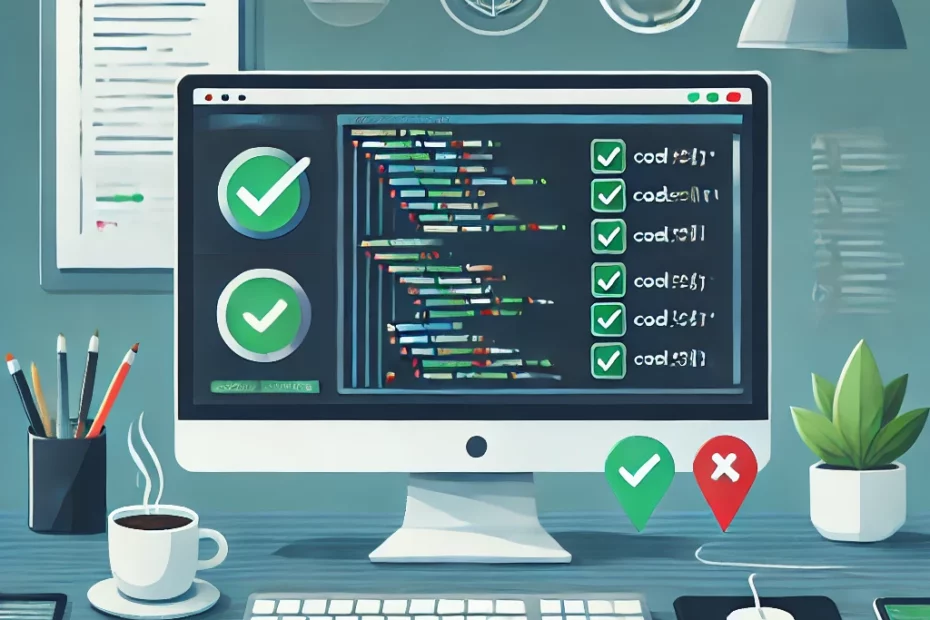Software development is a complex process that requires careful planning, collaboration, and execution. Understanding the best practices and common pitfalls can help developers deliver high-quality software efficiently. This guide outlines the essential dos and don’ts in software development, providing practical advice for developers at any stage of their career.
1. Do: Plan and Design Before Coding
Jumping straight into coding without a plan is one of the most common mistakes in software development. Proper planning and designing help create a clear roadmap, identify potential issues early, and ensure that the codebase remains scalable and maintainable.
- Create a project plan with milestones, timelines, and responsibilities.
- Design software architecture and data flow diagrams to visualize the system.
- Break down features into smaller, manageable tasks before coding.
2. Don’t: Neglect Code Reviews
Code reviews are crucial for maintaining code quality and ensuring consistency across the project. Skipping them can lead to undetected bugs, inconsistencies, and potential security vulnerabilities.
- Set up a regular code review process where peers can provide feedback.
- Encourage open discussions about code quality and best practices during reviews.
- Use automated tools to check for common issues but always complement them with human review.
3. Do: Write Clean, Readable Code
Clean code is the foundation of maintainable software. It’s not enough for code to work; it should also be easy for other developers (and your future self) to understand and modify.
- Follow coding standards and guidelines set by your team or community.
- Use meaningful names for variables, functions, and classes.
- Keep functions short and focused on a single task to make them easier to test and debug.
4. Don’t: Ignore Documentation
Documentation is often overlooked, but it’s an essential part of software development. Poor or missing documentation makes it difficult for others to understand how your code works or how to use your software.
- Document your code with comments that explain the purpose of complex sections.
- Create user guides and API documentation to help others use your software effectively.
- Keep documentation up to date as the software evolves.
5. Do: Test Early and Often
Testing is not just a final step; it should be integrated throughout the development process. Testing early helps identify bugs before they become costly to fix.
- Write unit tests for individual functions and components.
- Incorporate integration and end-to-end testing to verify how components work together.
- Use continuous integration (CI) tools to automate testing and catch issues early.
6. Don’t: Overcomplicate Solutions
Complex code and over-engineering can lead to more bugs, slower performance, and maintenance challenges. Always aim for simplicity.
- Solve problems with the simplest approach that meets requirements.
- Avoid unnecessary dependencies or features that are not required at the moment.
- Refactor code periodically to simplify and improve it as new insights are gained.
7. Do: Embrace Version Control
Using version control is non-negotiable in modern software development. It enables collaboration, tracks changes, and helps manage code across different versions.
- Use Git (or other version control systems) to manage your codebase.
- Create branches for new features, bug fixes, or experiments to keep work organized.
- Commit changes regularly with clear messages that describe what was done.
8. Don’t: Work in Isolation
Collaboration is key in software development. Working in isolation can lead to duplicated efforts, miscommunication, and missed opportunities for improvement.
- Collaborate with your team, share progress, and ask for feedback frequently.
- Use project management tools like Jira, Trello, or Asana to keep everyone on the same page.
- Engage in daily stand-ups or regular meetings to align with your team and address any blockers.
9. Do: Prioritize Security
Security should be a priority from the start of development. Failing to address security concerns can result in vulnerabilities that are difficult to fix later.
- Follow secure coding practices such as input validation and data encryption.
- Regularly update dependencies to patch known security vulnerabilities.
- Perform security testing and code audits to identify and fix issues.
10. Don’t: Skip Refactoring
Code needs to evolve as the software grows. Skipping refactoring leads to technical debt and can make the codebase harder to manage over time.
- Refactor code periodically to improve structure and eliminate redundancies.
- Use automated tools like linters to identify areas that need attention.
- Keep the codebase clean to make it easier for new developers to contribute.
By following these dos and don’ts, developers can build software that is efficient, maintainable, and scalable. Planning, collaboration, testing, and prioritizing code quality are all essential elements of successful software development. Remember, the goal is not just to write code that works but to create software that stands the test of time and adapts to future needs.
